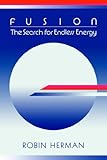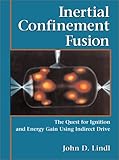|
|
Help |
| Home - Basic N - Nuclear Energy Fusion (Books) | |
e99 Online Shopping Mall
|
|
Help |
| Home - Basic N - Nuclear Energy Fusion (Books) | |
| Back | 41-60 of 100 | Next 20 |
click price to see details click image to enlarge click link to go to the store
| 41. Fusion Energy by Robert A. Gross | |
| Hardcover: 344
Pages
(1984-09-12)
list price: US$51.95 Isbn: 0471884707 Canada | United Kingdom | Germany | France | Japan | |
| 42. Low-Energy Nuclear Reactions Sourcebook (Acs Symposium) | |
 | Hardcover: 420
Pages
(2008-09-29)
list price: US$175.00 -- used & new: US$139.97 (price subject to change: see help) Asin: 0841269661 Average Customer Review: Canada | United Kingdom | Germany | France | Japan |
|
Editorial Review Product Description Customer Reviews (1)
| |
| 43. Fission, Fusion, and the Energy Crisis (Pergamon international library of science, technology, engineering, and social studies) by Stanley Ernest Hunt | |
| Hardcover: 180
Pages
(1980-06)
list price: US$40.00 Isbn: 0080247342 Canada | United Kingdom | Germany | France | Japan | |
| 44. Low Energy Nuclear Dynamics: European Physical Society XV Nuclear Physics Divisional Conference St. Petersburg (Russia), April 18-22, 1995 | |
| Hardcover: 667
Pages
(1996-01)
list price: US$139.00 Isbn: 9810223927 Canada | United Kingdom | Germany | France | Japan | |
|
Editorial Review Product Description | |
| 45. The physical principles of thermonuclear explosive devices (Fusion Energy Foundation frontiers of science series) by Friedwardt Winterberg | |
| Paperback: 144
Pages
(1981)
Isbn: 0938460005 Canada | United Kingdom | Germany | France | Japan | |
| 46. Edward Teller Lectures: Lasers and Inertial Fusion Energy by Hora Heinrich; George H. Miley | |
 | Hardcover: 380
Pages
(2005-06-30)
list price: US$112.00 -- used & new: US$112.00 (price subject to change: see help) Asin: 186094468X Average Customer Review: Canada | United Kingdom | Germany | France | Japan |
|
Editorial Review Product Description Customer Reviews (1)
| |
| 47. Nuclear Power and Energy Security (NATO Science for Peace and Security Series B: Physics and Biophysics) | |
 | Paperback: 282
Pages
(2009-10-16)
list price: US$119.00 -- used & new: US$92.51 (price subject to change: see help) Asin: 9048135036 Canada | United Kingdom | Germany | France | Japan |
|
Editorial Review Product Description World energy consumption has grown dramatically over the past few decades. This growth in energy demand will be driven by large increases in both economic growth and world population coupled with rising living standards in rapidly growing countries. The last years, we routinely hear about a "renaissance" of nuclear energy. The recognition that nuclear power is vital to global energy security in the 21st century has been growing for some time. "The more we look to the future, the more we can expect countries to be considering the potential benefits that expanding nuclear power has to offer for the global environment and for economic growth," IAEA Director General Mohamed ElBaradei said in advance of a gathering of 500 nuclear power experts assembled in Moscow for the "International Conference on Fifty Years of Nuclear Power - the Next Fifty Years". But such a renaissance is not a single-valued and sure thing. Legitimate four unresolved questions remain about high relative costs; perceived adverse safety, environmental, and health effects; potential security risks stemming from proliferation; and unresolved challenges in long-term management of nuclear wastes. Failure to answer these questions adequately could imperil the nuclear revival so many have proclaimed is night. This proceeding examines the status and future of nuclear power because of a belief that this technology is an important option for the regional and the world countries to meet the future energy needs without emitting carbon dioxide and other atmospheric pollutants. The objectives, addressed to government, industry, and academic leaders, discusses the interrelated technical, economic, environmental and political challenges facing a significant increase in the global nuclear power utilization over the next half century and what might be done to overcome those challenges. | |
| 48. Fusion: The Search for Endless Energy by Robin Herman | |
 | Paperback: 280
Pages
(2006-03-20)
list price: US$55.00 -- used & new: US$47.70 (price subject to change: see help) Asin: 0521024951 Canada | United Kingdom | Germany | France | Japan |
|
Editorial Review Product Description | |
| 49. Laser Thermonuclear Fusion: Research Review, (1984-2008), on Generation of Suprathermal Particles, Laser Radiation Harmonics, and Quasistationary Magnetic ... Graduate Courses, ISSN:1543-558X.) by V. Alexander STEFAN | |
 | Kindle Edition:
Pages
(2008-12-10)
list price: US$59.99 Asin: B0032FPVW2 Canada | United Kingdom | Germany | France | Japan |
|
Editorial Review Product Description | |
| 50. Excess Heat: Why Cold Fusion Research Prevailed (2nd Edition) by Charles G. Beaudette | |
 | Paperback: 440
Pages
(2002-05)
list price: US$21.95 -- used & new: US$19.99 (price subject to change: see help) Asin: 0967854830 Average Customer Review: Canada | United Kingdom | Germany | France | Japan |
|
Editorial Review Product Description Customer Reviews (10)
In addition to summarizing results of many interesting projects the author offers several philosophical observations about scientific methodology and protocols used in various scientific disciplines. Referring to the Cold Fusion controversy he writes: "to discard a well made observation is to violate modern protocol [scientific methodology]. If widely practiced, such a course would quickly undo science. The most interesting and perplexing observations, though accurately measured, would have to be refused by the scientific community because their cause was obscure. Does this mean that any claim of observation must be accepted as worthy of scientific study? Certainly not. It means something quite different. It means that the controversy must center about the quality of the measurements and not about the source or cause of the phenomenon. . .If conflicting data is prohibited from contention, then theories are no longer falsifible. Were it to enable such practice, science would evolve into secular theology." Beaudette's book has many other interesting observations and quotes, together with the scientific background of major cold fusion researchers. It certainly deserves a place in libraries, especially in high schools and universities. The level is appropriate for an educated layman.
| |
| 51. Plasma Physics and Controlled Nuclear Fusion Research, 1994 (Proceedings (International Atomic Energy)) | |
| Hardcover: 809
Pages
(1995-01)
Isbn: 9201022956 Canada | United Kingdom | Germany | France | Japan | |
| 52. Plasma Physics and Controlled Nuclear Fusion Research 1988 (Proceedings (International Atomic Energy)) (v. 1) by International Atomic Energy Agency | |
| Hardcover: 775
Pages
(1989-01)
Isbn: 9201300891 Canada | United Kingdom | Germany | France | Japan | |
| 53. From Fission to Fusion: The Story of India's Atomic Energy Programme by M. R. Srinivasan | |
| Hardcover: 318
Pages
(2002-01)
-- used & new: US$45.54 (price subject to change: see help) Asin: 0670049247 Canada | United Kingdom | Germany | France | Japan | |
| 54. Materials for Advanced Energy Systems and Fission & Fusion Engineering: Proceedings of the Seventh China-Japan Symposium Lanzhou, China 29 July - 2 August 2002 by China-Japan Symposium, Z. G. Wang, Z. Y. Zhu, G. M. Jin | |
 | Hardcover: 460
Pages
(2003-08)
list price: US$181.00 -- used & new: US$179.98 (price subject to change: see help) Asin: 9812384243 Canada | United Kingdom | Germany | France | Japan |
|
Editorial Review Product Description | |
| 55. Plasma Physics for Thermonuclear Fusion Reactors (Ispra Courses on Nuclear Engineering and Technology Series) by G. Casini | |
| Hardcover: 492
Pages
(1981-01-01)
list price: US$44.95 -- used & new: US$44.95 (price subject to change: see help) Asin: 3718600919 Canada | United Kingdom | Germany | France | Japan | |
| 56. Discovery of the Cold Fusion Phenomenon: Development of Solid State_Nuclear Physics and the Energy Crisis in the 21st Century by Kozima Hideo | |
| Paperback:
Pages
(1998)
Isbn: 4871860442 Canada | United Kingdom | Germany | France | Japan | |
| 57. Plasma Physics and Controlled Nuclear Fusion Research: International Conference Proceedings: v. 3 by International Atomic Energy Agency | |
| Paperback: 629
Pages
(1988-01)
Isbn: 9201302878 Canada | United Kingdom | Germany | France | Japan | |
| 58. Nuclear Fission and Cluster Radioactivity: An Energy-Density Functional Approach by M.A. Hooshyar, Irwin Reichstein, F. Bary Malik | |
 | Paperback: 200
Pages
(2010-11-30)
list price: US$89.95 -- used & new: US$89.95 (price subject to change: see help) Asin: 3642062342 Canada | United Kingdom | Germany | France | Japan |
|
Editorial Review Product Description It is the first application to nuclear physics from energy-density functional method, for which Professor Walter Kohn received the Nobel Prize in Chemistry. The book presents a comprehensive extension of the Bohr-Wheeler theory with the present knowledge of nuclear density distribution function. | |
| 59. Inertial Confinement Fusion: The Quest for Ignition and Energy Gain Using Indirect Drive (AIP-Press) by John D. Lindl | |
 | Hardcover: 204
Pages
(1997-11)
list price: US$64.95 Isbn: 156396662X Average Customer Review: Canada | United Kingdom | Germany | France | Japan |
|
Editorial Review Product Description Customer Reviews (1)
| |
| 60. Nuclear Fusion by International Atomic Energy Authority | |
| Paperback: 137
Pages
(1992-12-31)
Isbn: 9201006926 Canada | United Kingdom | Germany | France | Japan | |
| Back | 41-60 of 100 | Next 20 |